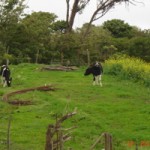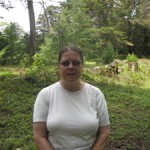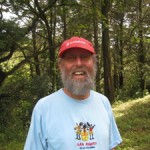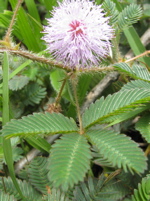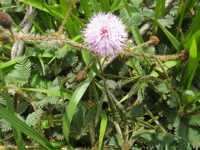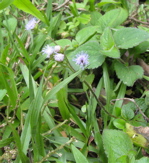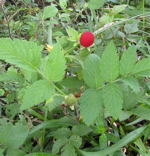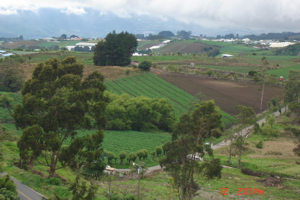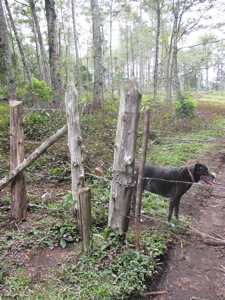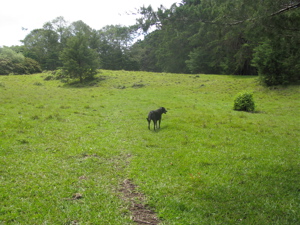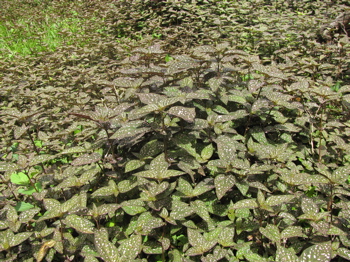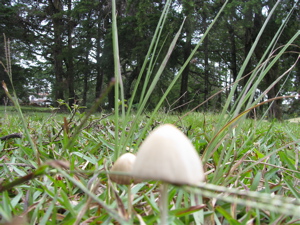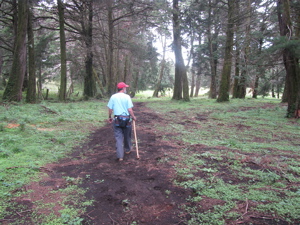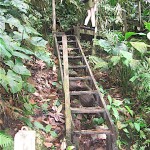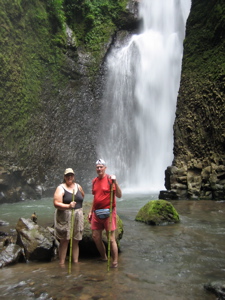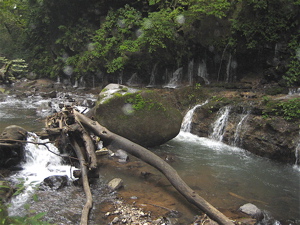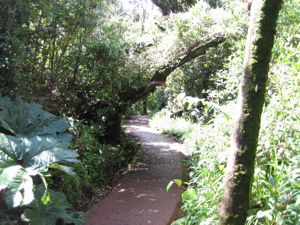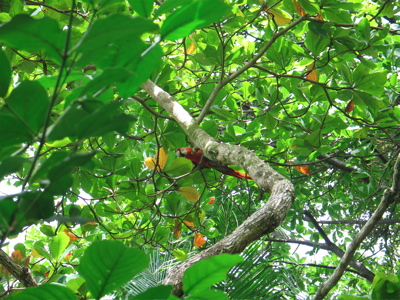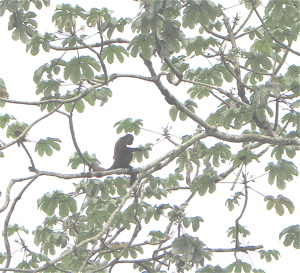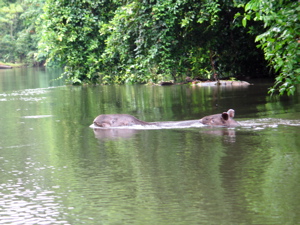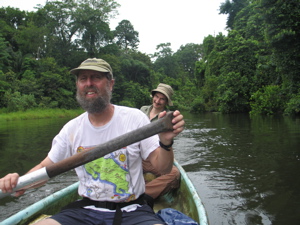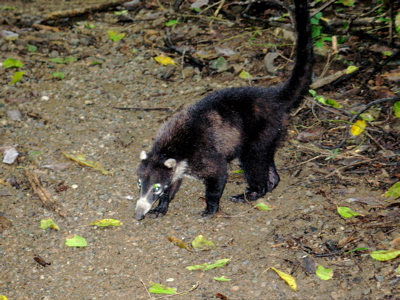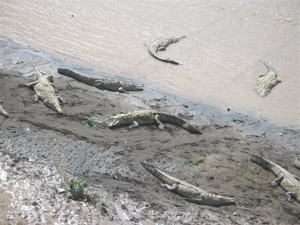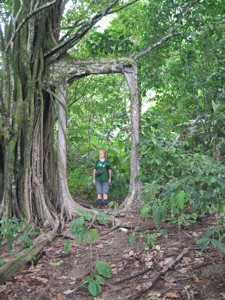
Irazú
Here are some possible trip itineraries based on your short time schedule. The emphasis, of course, is on hiking, but we always mix other activities so it just depends on how much you value those activities and the weather on the day we have it planned. Some of the activities are:
• Hot springs
• Swimming: Ocean, rivers, plunge pools beneath waterfalls (my favorite).
• Snorkelling: Often means renting a boat to an island and depends on the roughness of the sea that day.
• Beach camping (I have all necessary stuff).
• Long beach hikes: Hot and sunny, but also possible at night.
• Light Backpacking: Hut to hut but no services at huts except mattresses, cooking stuff, and cooking fuel. We carry food, clothes, sleeping sacks, and rain gear.
• North West trip: Volcan Tenorio: Stay at community co-op lodge and reserve. Hike their trails to a laguna high on the volcano. This is rainforest/cloud forest terrain and there is no trail to the summit as far as I know.
• Rincón de la Vieja National Park: The park campground is closed so we would have to stay at hotels nearby. Hiking to the summit of this active volcano is a full day, weather permitting. This park has another full day’s worth of hiking to waterfalls and geothermal attractions that are not weather dependent. Great trees and wildlife, too. The local lodges are on large ranches with their own trails systems.
• Santa Rosa National Park: Beach camping in the national park, and finding local fisherman in village to take us snorkelling to remote coves and islands on north shore of park. Some snorkelling from rocky points of the beach also. Not a touristy area, but the campground is a zoo on weekends and holidays.
• Monteverde: Quaker-founded community high in the western mountains. Very touristy, which is hard to believe since the trip into Monteverde is tough and the principle activity is nature. It’s also a very artsy town. It offers two large reserves, and many smaller ones—all with trails. This is cloud forest country. Here we can do the hut to hut hike, day hike in the reserves staying at local lodges, or light backpack into a biological research station that takes paying guests and has a great view of Volcán Arenal. Monteverde can be combined with one of two possible beach trips:
•a) Central Nicoya: Stop at Barra Honda National Park to do some caving. This trip is with local indigenous guides. Hour and a half hike in. Hour decent and tour of cave, and hour and a half back to park headquarters. Guides are very knowledgeable about local plants and animals. 
• Nosara beaches: long beach hikes, maybe some river kayaking or snorkelling.
•b) Southern Nicoya: This trip can be combined with Monteverde, or can be its own trip, because there is lots to do. The trails are moderate to difficult and the temperature will be hot. Taking a ferry across the gulf of Nicoya is both pleasant and a hassle.
• Curú: Private reserve on a working farm. Primitive but beach front cabins. Trail system, lots of wildlife, sea kayaks and snorkelling.
• Montezuma: Principle tourist town of the area. Great waterfalls and long beach hikes.
• Cabuya: Beach camping, sea kayaking and snorkelling
• Cabo Blanco Absolute Reserve: One day worth of hiking. Dry forest.
High Mountains and the beaches of South-Central coast :
• Cerro de la Muerte: Hiking in oak forest 1900-3000 meters elevation. Chance to see Quetzals.
• San Gerado de Rivas-Chirripó National Park: Highest peaks in the country at 3800m. Not possible as a day hike, and reservations for refugio at timberline are hard to get. The summit is not practical for short trips, but this area is great for day hikes from the town and not very touristy.
• Playa Dominical to Ballena National Park: Hike to waterfall with great swimming, long beach walks, snorkelling, sea caves.
Possible day trips from my house:
• Volcán Poás National Park: World’s largest active crater. Cloud forest hike to old crater. This hike is easily combined with Los Chorros waterfalls.
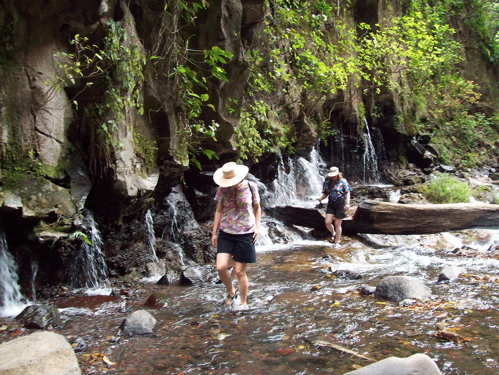
Los Chorros
• Volcán Barva National Park: Is a dormant volcano and clould forest, 2800m elevation.
• Volcán Irazú National Park: Highest volcano in country, active, 3424m, tourists drive to crater but there is a trail from park halfway up. I usually combine this hike with a visit to Lankester Botanical Gardens.
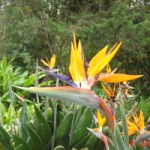
Lankester Gardens
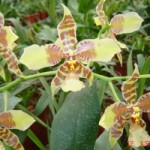
Jardines Lankaster belongs to University of Costa Rica
• Volcán Turrialba National Park: Active, and some days it has restricted access. 3400m. Hike up on jeep road. Trail goes down into crater bottom which is mostly dry.
• Tapantí National Park: Beautiful scenery and plants. Mid elevation rainforest.
• Pico Blanco: Hike with views of central valley (San José urban sprawl).
• Cloud Forest and waterfalls in my neighborhood: Combination hike of rural roads and primitive trails.
ESPAÑOL
He aquí algunos de los posibles itinerarios de viaje, basados en tu estadía corta. El énfasis es, por supuesto, en hiking, pero siempre mezclamos otras actividades; todo depende de tu interés en ellas y en el estado del tiempo para el día en cuestión. Dichas actividades incluyen:
• Balnearios termales.
• Natación: Océano, ríos, pozas bajo cataratas (¡mis favoritas!)
• Snorkel: A menudo significa tener que alquilar un bote a una isla, y depende de la actividad del mar ese día.
• Campamentos de playa: Tengo todo lo necesario para hacerlos.
• Largas caminatas de playa: Con calor y sol, pero también se pueden hacer de noche.
• Expedición liviana: De rancho a rancho, pero sin servicios excepto colchones, enseres de cocina, y gas para cocinar. Nosotros llevamos comida, ropa, bolsas de dormir e impermeables.
• Viaje al noroeste: Volcán Tenorio: Nos quedamos en albergue cooperativo y reserva. Caminata por sus senderos a una laguna arriba en el volcán. El terreno es de bosque lluvioso/nuboso, donde si no me equivoco, no existe sendero a la cumbre.
• Parque Nacional Rincón de la Vieja: El área de campamento está cerrada, pero nos podemos hospedar en hoteles cercanos. Caminar a la cumbre de este volcán activo nos toma todo el día, si el clima lo permite. El parque tiene otra caminata de todo un día a cataratas y atracciones geotermales, la cual no depende del clima. También hay árboles y vida silvestre increíbles. Los albergues locales están en haciendas que cuentan con su propio sistema de senderos.
• Parque Nacional Santa Rosa: Acampamos en la playa en el parque y buscamos a un pescador que nos lleva a ensenadas e islas remotas hacia el norte del parque. Podemos hacer snorkel desde algunas puntas de la playa. Esta zona no es turística, pero el campamento de La Casona se llena los fines de semana y feriados.
• Monteverde: Es una comunidad cuáquera en las altas montañas del oeste. Muy turístico, lo cual es difícil de creer debido a lo difícil que es llegar ahí, y su principal actividad es la Naturaleza. También es un pueblo artístico. Ofrece dos reservas y muchas otras pequeñas —todas con senderos y todas dentro del bosque nuboso. Acá sí podemos hacer la caminata de rancho a rancho, caminata de un día en las reservas quedándonos en hospedajes locales, o caminata a la estación biológica que acepta huéspedes pagando y tiene linda vista del volcán Arenal. Monteverde puede combinarse con uno o dos posibles viajes de playa:
•a) Nicoya central: Paramos en el Parque Nacional Barra Honda para visitar las cuevas. Este viaje es con guías indígenas y dura hora y media para entrar. Nos dan el tour de las cuevas en por lo menos una hora, más otra hora y media para volver a la sede. Los guías saben mucho sobre flora y fauna del lugar.
• Playas de Nosara: Largas caminatas de playa y tal vez, kayak en río, o snorkel.
•b) Sur de Nicoya: Este viaje se combina con Monteverde, o se hace solo, pues hay mucho que hacer. Los senderos son de dificultad moderada a difícil y la temperatura es bien caliente. El ferry para cruzar el Golfo de Nicoya es placentero y a la vez, un problema constante.
• Curú: Reserva privada en finca de trabajo. Cabinas primitivas, pero en la playa. Sistema de senderos, mucha vida silvestre, kayaks de playa, y snorkel.
• Montezuma: Es el principal pueblo turístico de la zona. Tiene lindas cataratas y largas caminatas de playa.
• Cabuya: Campamento de playa, kayak y snorkel.
• Reserva Absoluta Cabo Blanco: Caminata de un día. Bosque seco.
Montañas altas y playas de la costa Pacífica sur-central:
• Cerro de la Muerte: Caminata en bosque de robles a 1900-3000 metros de altura. Oportunidad de ver quetzales.
• San Gerado de Rivas-Parque Nacional Chirripó: Son los picos más altos del país a 3800 m. No son aptos para caminatas de un día y es difícil obtener reservaciones para el refugio en la cumbre. La cumbre no es práctica para viajecitos cortos, pero esta área es perfecta para hacer viajes de todo un día desde el pueblo, y no es demasiado turística.
• Playa Dominical al Parque Nacional Ballena: Caminata a catarata que ofrece buena natación; largas caminatas de playa, snorkel, cuevas marinas.
Viajes de un día desde mi casa:
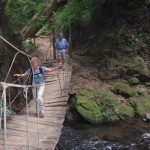
Chorros bridge - puente Chorros
• Parque Nacional Volcán Poás: El cráter activo más grande del mundo. Caminata en bosque nuboso al cráter antiguo. Esta caminata se puede combinar con las cataratas Los Chorros.
• Parque Nacional Volcán Barva: Este es un volcán dormido, con su bosque nuboso a 2800 m de altura.
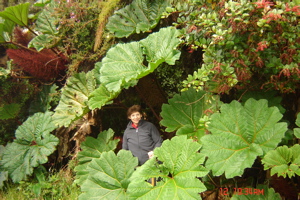
Sheila with Sombrilla de Pobre (Poor Man's Umbrella)
• Parque Nacional Volcán Irazú: Es el volcán más alto del país, activo, 3424m de altura. Los turistas suben en auto hasta el cráter, pero conozco un sendero a mitad del camino. Normalmente combino esta caminata con una visita a los jardines Lankester.
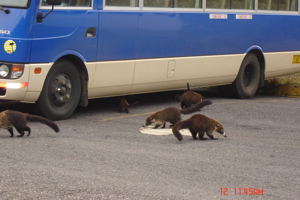
Irazú parking lot - estacionamiento en el Irazu
• Parque Nacional Volcán Turrialba: En este momento muy activo y algunos días la entrada está restringida. 3400m. Subimos por un camino para 4X4. El sendero nos lleva a la base del cráter, la cual es bastante seca.
• Parque Nacional Tapantí: Con bellos paisajes y plantas. Bosque lluvioso de elevación media.
• Pico Blanco: Caminata con vistas del Valle Central.
• Bosque nuboso y cataratas en mi vecindad: Caminata combinada de caminitos rurales y senderos primitivos.
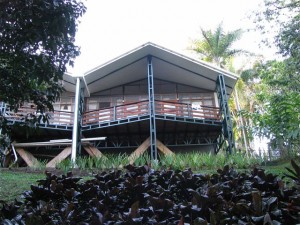 Wilson Gardens – Las Cruces OTS (Organization For Tropical Studies)
Wilson Gardens – Las Cruces OTS (Organization For Tropical Studies)
